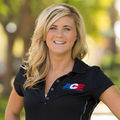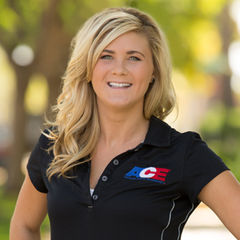This five-part series covers where and why these key topics are important for you as fitness professionals. This information still applies to those studying for the ACE Health Coach and ACE Advanced Health and Fitness Specialist Certifications, but because these are advanced certifications, it’s expected that you already have this base knowledge from your prior qualifications
We will cover the basics of the key macro- and micro-nutrients, how to best fuel the body before, during, and after exercise, as well as how to incorporate the dietary guidelines into your role as a fitness professional. To discern whether or not this information is going to be important, ask yourself, “How does this apply to training a client or teaching an exercise class?” If there is no practical application, it’s probably a topic where a general understanding is sufficient. If there is a direct application to an aspect of training, then it’s probably going to be a topic you want to dive into a little deeper. Let’s have a look at some of these important topics:
Key Macronutrients
Carbohydrates, fats, and proteins—know them, love them, eat them. You want to understand the basic building blocks of each one (i.e., proteins are made of essential and nonessential amino acids) and what the recommendation is for the percentage of calories that macronutrient should constitute (i.e., 45 to 65 percent carbohydrates). And you really want to know the exercise fueling recommendations, as many of your clients will want to know how to fuel their bodies before and after their workouts. Know some good sources of where to get those various nutrients, and have a good understanding of the Glycemic Index vs. Loading. By focusing on these things, we can help our clients understand what a typical diet should look like and offer them some good snack or meal ideas for days when that are or are not hitting the gym, etc.
As far as the math goes, make sure you understand the Calories per gram of each of the macronutrients (protein and carbohydrates = 4 Cal/gram, and fats = 9 Cal/gram) so you can calculate the number and percentage of calories coming from each.
Key Micronutrients
Our study coaches are often asked, “Do I have to know ALL of the vitamins and minerals?” Technically, anything in your manuals is fair game for the exam, so the literal answer is yes, you could see any of those on the exam. They will not, however, be heavily emphasized. What you really want to focus on is the main vitamins and minerals and some good sources of where to get them. This includes the vitamins and minerals you see or hear about most often, like those found on a food label (e.g., vitamins A, C, and D, potassium, sodium, calcium and iron) or the ones that are commonly associated with deficiencies (like calcium and vitamin D for osteoporosis). Make sure you’re aware of their function and what foods are good sources.
Calorie Deficit and Weight Management
A person’s weight will fluctuate depending on one simple factor: calories in vs. calories out. A surplus of calories will lead to weight gain, and a deficit of calories will lead to weight loss. We can teach our clients how to count the calories they consume and factor in calories burned through physical activity to track this caloric balance.
For healthy weight loss, your clients should aim to lose 1 to 2 pounds per week (a caloric deficit of 3,500 calories = 1 pound of fat loss). With moderate caloric restrictions and moderate increases in activity, we can help them achieve this. Keep in mind that when restricting calories, we never want to go below the resting metabolic rate (RMR), so you’ll want to calculate both RMR and daily caloric needs and make sure your clients are consuming an amount between that range. Click here to calculate your clients’ RMR and click here to calculate caloric needs based on age, gender and activity level.
General Understanding of Digestion Pathway
It’s important to understand how digestion and absorption take place because different foods are broken down and used at different times in different ways. There are two types of digestion: mechanical and chemical, and both begin in the mouth. Absorption, for the most part, takes place in the small intestine through its villi and microvilli borders. Be aware of when and where the major macronutrients begin to be broken down and how they’re absorbed.
Dietary Guidelines and ChooseMyPlate.gov
Use this portion of your studies to gain some experience using and navigating these tools. It’s important to have an understanding of what the guidelines are and how to use ChooseMyPlate.gov. Therefore, in addition to the information in the book, go online and play around with these tools.
Special Diet Considerations
As fitness professionals, we are going to get asked tons of questions about fad diets, supplements, etc., so it’s essential that we are aware of special diet needs. While it is impossible to be aware of every single need that someone has in their diet (which is why many times we may need to refer them to a more qualified professional like a registered dietitian or physician, you do need a general understanding of the more common ones listed in your manual: obesity, hypertension (know the DASH Diet Plan), diabetes, osteoporosis, pregnancy/lactation, and vegetarian. Finally, know the signs of the different eating disorders and when and how to refer them to the appropriate expert (e.g., R.D., physician).
Hydration and Nutrition Needs for Exercise
The more active someone is, the more calories they need to consume to maintain energy balance. Be sure to know the recommendations before, during and after exercise for hydration and the macronutrients. Some of the macronutrients will have specific recommendations (i.e., protein varies from 0.8 to 1.2-1.7 g/kg/day depending on activity level), while others are more general (i.e., avoid high-fat meals prior to exercise as it may cause gastrointestinal discomfort).
Scope of Practice
Many of you will read this and wonder, “Why are we learning about nutrition if we can’t even make meal plans for someone?” And while it is outside your scope of practice to tell people exactly what to eat and when there is much you can accomplish by addressing nutrition with your clients. You’re basically using your knowledge and the tools provided to you (like the USDA Guidelines and ChooseMyPlate.gov) to equip your clients with the knowledge and skills needed to make healthy selections on their own. Here is some more information on Scope of Practice for Fitness Professionals.




 by
by 







 by
by